What are step up and step down rings?
Many cameras allow you to screw a filter onto the end of the lens to achieve a certain effect. For example, one of the most popular filters is the polarizing filter, used to reduce reflections and glare, and to enhance colors and contrast in landscape photography.
When you purchase a filter, you need to make sure that it comes with the correct size threads to screw onto your camera's lens. Different cameras and lenses have different filter thread sizes, and filters are also available in a wide range of different sizes.
The problem comes when you have a filter in one size, but your lens has a filter thread of a different size. This can easily happen when you upgrade from one camera to another, or if you buy more than one lens. To solve this, you can use stepping rings.
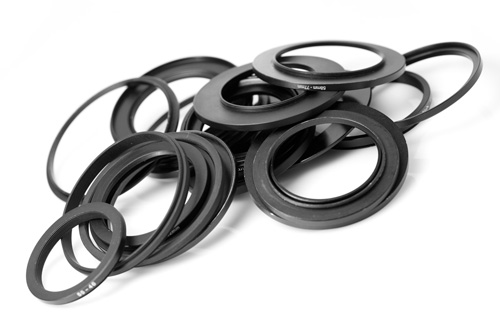
Pile of step up and step down rings
A stepping ring is simply a thin metal ring with a male filter thread of a certain size on one side, and a female filter thread of a different size on the other side. The male side screws into the end of the lens, and the filter screws into the female side.
So, for example, if your lens had a 58mm size filter thread, but a filter you had bought was 77mm, you would use a 58-77mm step up ring. The 58mm side screws into your lens, and the filter screws into the 77mm side.
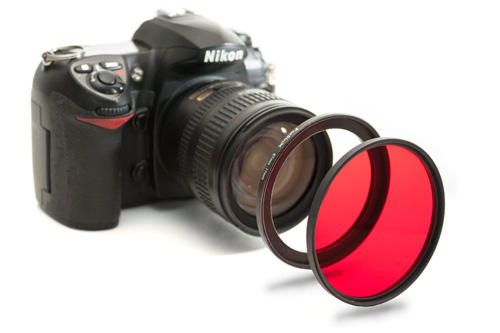
Stepping ring screws onto camera, filter screws onto stepping ring
A ring that is larger on the filter side than it is on the lens side is known as a step-up ring, while a ring that is larger on the lens side than it is on the filter side is known as a step down ring.
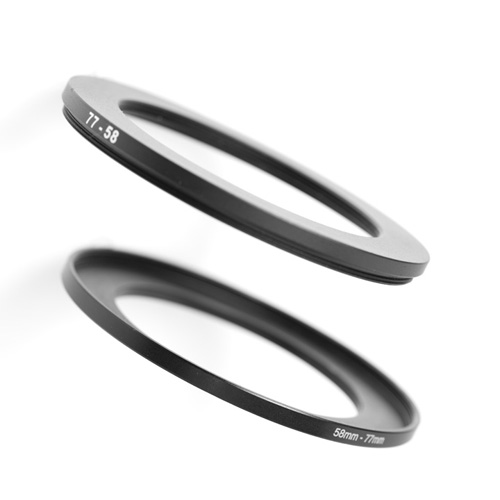
Step down ring (top) and step up ring (bottom)
The advantages of stepping rings
The main advantage of using stepping rings is that it means you can use a single filter with the appropriate step ring on just about any camera or lens that you ever own. The main benefit of this is in terms of cost.
High quality filters that don't degrade image quality can be quite expensive, so buying a different filter for each camera or lens that you ever own can really add up. Stepping rings on the other hand are very cheap, and be purchased for a few dollars each.
If you pack multiple lenses or cameras in your camera bag, using stepping rings can mean less to carry. If your lenses use different filter sizes, then using one filter with stepping rings is less weight than one filter for each lens.
The disadvantages of stepping rings
There are some issues that you need to be aware of regarding stepping rings though. The main issue is if you are considering using a step down ring to mount a small filter on a lens with a larger diameter front. This can cause heavy vignetting, so is generally not recommended.
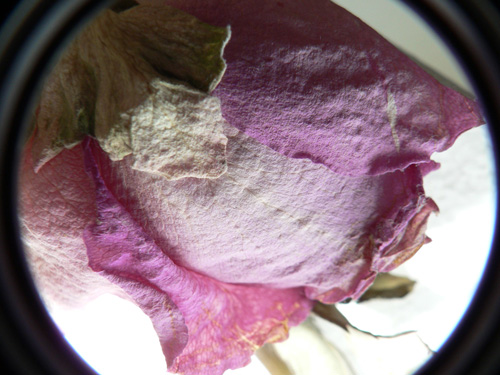
Vignetting from using a small filter on a lens that requires larger filters
Flare can also be more of a problem when using a filter with a step ring. The main issue is if you are using a step-up ring to mount a filter. The extra width means that you won't be able to fit the lens' twist lock lens hood onto the lens. And without a lens hood, you are more likely to get flare in your photos.
The other issue with flare is that a stepping ring means there is a larger gap between the filter and the front element of the lens. This larger gap gives light more of a chance to bounce around and cause flare.
However, in practice I would consider lens flare from using a stepping ring to be very minor. To counteract the lens hood problem, you can buy a screw-in lens hood at the same size as your filter. This screws into the front of the filter. Be sure not to buy a lens hood that is too large though, or this will cause vignetting. One about the same depth (or slightly shorter) than your lens' snap lock lens hood should work fine.
The last issue is that using a filter with stepping rings is not as convenient as using a filter that is the right size. You need to screw the stepping ring in first, and then the filter, taking twice as long as just screwing a filter straight onto the lens. When it comes to taking the filter off the lens, again you have the same issue.
If you are using multiple lenses and want to use the same filter on all of them, then you have to switch the filter and stepping ring each time you change lenses. This is not as convenient as having each lens with the correct size filter already mounted.
Overall, I would say that step up rings are a good investment for most DSLR users, where filter sizes are often quite large (meaning filters are expensive). Purchasing a single filter in the largest size you will need, and then using step-up rings to use the filter on smaller lenses can save you a lot of money.
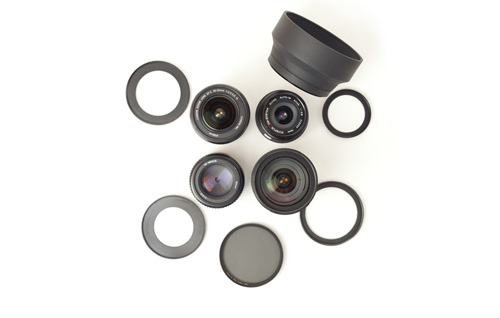
These lenses all have different size filter threads, Using a single filter with step up rings is a lot cheaper than buying a different size filter for each lens. Also shown is an extendable rubber screw-in lens hood.
If you are using a camera where the filter sizes needed are quite small, or you only have one or two lenses and don't ever intend on buying more, then stepping rings are not recommended so much. Small filters are relatively cheap, and the ease of use of correctly sized filters can more easily justify the cost of buying multiple filters in different sizes.




